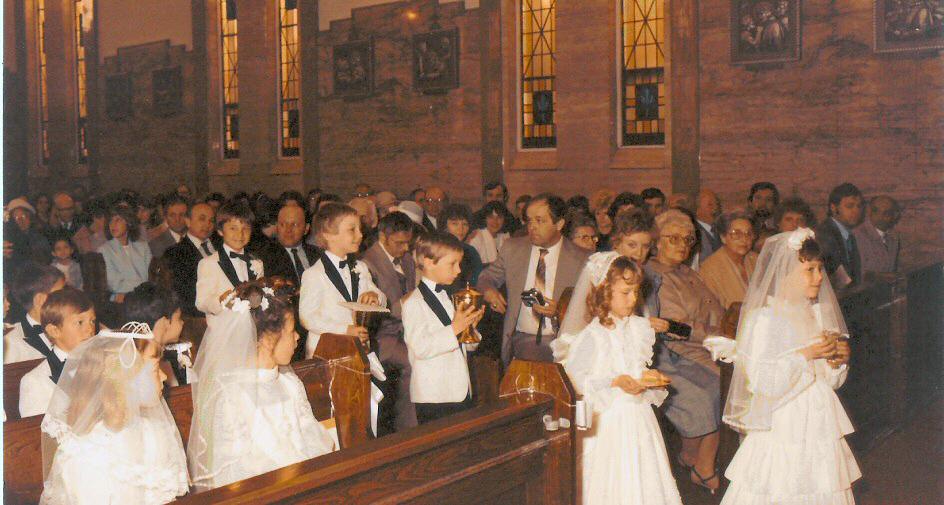
But the Toronto-area Slovak Catholics felt the need for their own parish. While Slovaks in the United States had priests to serve them, those living in Canada, unfortunately, did not. As a result, the Slovak community began congregating in the Polish parish of St. Stanislaus on Denison Ave. It soon became apparent though, that a priest who spoke the language of the Slovak people had to be found. In 1929, the members of the three fraternal societies left St. Stanislaus Parish and went to St. Mary’s Parish on Bathurst St. to establish the unofficial parish of St. Joseph. Here they were able to sing Slovak hymns during Sunday mass. The first Slovak priest who came to serve mass for the community was Father Andrej Sulek from Buffalo. Another priest, Father Albert Forian, S.V.D., also made trips to Toronto during his work as a travelling missionary among Slovaks living across Canada. These people must be admired for their ability to maintain and grow their Slovak Catholic community even without a pastor of their own. They formed the Rosary Society in 1931, and held Slovak missions in 1932, led by the Slovak Franciscan Father Armand Kopac.
On April 18th, 1934, a historic day for this parish, Father Frank Dubosh brought Father Michael Shuba from Fairport, Ohio to Toronto to become the first pastor for the Slovak faithful in the Diocese of Toronto.
Father Shuba celebrated his first mass on April 22nd, 1934, which was attended by 125 people. A few days after his arrival, the Slovak parish was officially established and Sts. Cyril and Methodius were named as its patrons. Father Shuba was able to secure the help of the Felician Sisters in 1938. The Sisters took over the care of the parish’s children, taught religious classes, were responsible for church music and singing, and the decoration of the altars. Even though the financial situation of the parish was slow to improve, the parishioners became more vocal about their desire for their own church. Under the leadership of Father Shuba, the first Slovak church of Sts. Cyril and Methodius, built by the congregation at 34 Claremont St., was blessed on Sunday, November 9th, 1941.
Over the following decades, the congregation strengthened in faith and numbers, supported by a vibrant and active spiritual and volunteer membership. The Slovak Jesuits provided their assistance to the parish beginning in 1952, when they were unable to return to Slovakia after completing their studies. The church flourished during this period and welcomed its second and third wave of immigrants. This new group of immigrants, especially those arriving in 1968, held different opinions on various matters and had dissimilar needs than previous immigrants. These new parishioners did not live close together, but moved further to the suburbs, far away from the church. As more and more Slovaks arrived in subsequent years, the lack of sufficient parking became a problem for the parish.
In 1984, Rev. Vincent Danco, S.J., together with the Parish Council, undertook the difficult task of searching out a new location while at the same time putting into motion the sale of the old church. Finally, in 1993, fundraising began in earnest. The final building plans and budget for the new church were approved and construction was started in 1995. The last Mass in the old church was celebrated on September 15th, 1993.
Our new church, at its present location in Mississauga, was officially blessed by His Grace Aloysius Ambrosic, Archbishop of Toronto, on Sunday, May 12th, 1996.

 Slovenčina
Slovenčina









